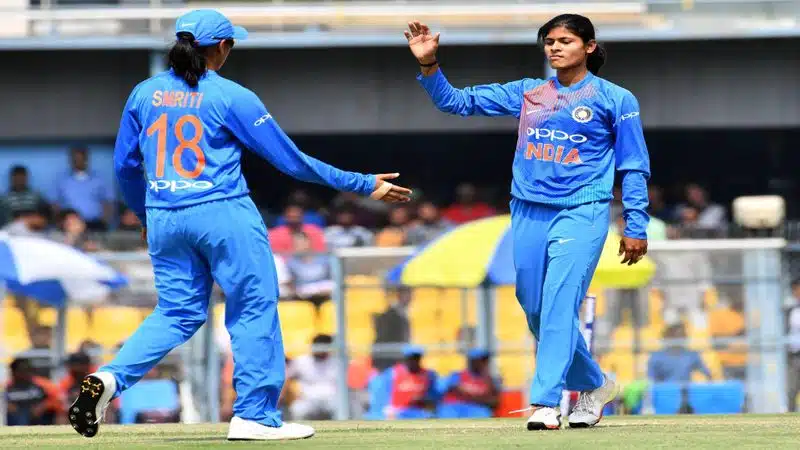
The second major ICC event of 2020 will see the women's teams land in Australia for the T20 World Cup that stretches from February 21 to March 8th. We analyze the strengths and weaknesses of the women's teams as they prepare themselves for the big tournament. First up in the series is the India Women's team.
Team: Harmanpreet Kaur (captain), Smriti Mandhana, Shafali Verma, Jemimah Rodriguez, Harleen Deol, Deepti Sharma, Veda Krishnamurthy, Richa Ghosh, Tania Bhatia, Poonam Yadav, Radha Yadav, Rajeshwari Gaikwad, Shikha Pandey, Pooja Vastrakar, Arundhati Reddy.
Strength
The evident strength in India's line-up is in the top-order comprising Smriti Mandana, Shafali Verma and Jemimah Rodriques. The three have carried India's batting alongside Harmanpreet Kaur and have eight half-centuries between them since 2019 in the format. The potent top-order has kept India in matches.
The other outright strength is the quality in the spin attack. Radha Yadav, Poonam Yadav, Rajeshwari Gayakwad and Deepti Sharma have choked teams with their bowling in the middle overs. Radha and Deepti are the top wicket-takers since 2019 with 23 and 22 wickets respectively in T20Is. Poonam has 16 while Gayakwad has played lesser number of matches but adds sting to the line up as a back-up.
Weakness
The tournament is in Australia and there's a general notion that India do not have quality in the pace attack.
"I think fast bowling in general, if you look at the trend across the Big Bash earlier this season, has come back into vogue a little bit," Australian all-rounder Ellyse Perry declared a few days ago predicting pace to play a major role this T20 World Cup.
When the world's leading all-rounder talks, you listen. India's pace attack - save Shikha Pandey - lack a punch with Arundhati Reddy and Mansi Joshi, despite being around for long enough, not playing enough matches nor performing well enough.
Pooja Vastrakar, the other pace bowler, has four wicktes in nine matches since 2019. Reddy has 6 in 6 matches in this time frame while Joshi has two in five matches. Shikha Pandey has done well, but she has been waging a lone battle with little to no support from her pace compatriots.
The other weakness lies in the middle-order where aside from Kaur - whose form itself has dwindled - there's little quality. Since 2019, omly two batswomen - other than Kaur - have 100-plus runs from positions 4-7 - Deepti and Veda Krishnamurthy. Neither have the consistency or a game-changing strike rate to boast of. If the top-order fumbles, the middle-order is unlikely to resurrect and build totals.
Opportunity
The major concern that needs to be ironed out is that Smriti Mandana, despite her impressive T20I records, do not do well in major tournaments. Mandana averages 20.75 in T20 World Cups with just one half-century. Even in multi-nation tournaments like the T20 Asia Cup, Mandana has done poorly, averaging less than 20 in her career. Can she carry her bilateral record to the World Cup this year?
Threat
Skipper Harmanpreet Kaur's stocks have fallen a bit since 2019 with the skipper not scoring a single half-century since 2019 in the format. Her average and strike rate have come down too in this time frame.
India women have had a stumbling block in pressure matches in general. They had the 2017 Women's ODI World Cup title well in sights in the finals until England managed to come from behind to hand them a loss. The story was in no different in 2018 as they lost the T20 World Cup semi-final to the Aussies.
Feature image courtesy: AFP/ Biju Boro



















